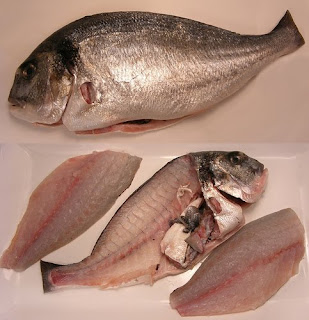 |
| Juvenile black sea bass in the tank at Milford Laboratory. (Credit: NOAA) |
After two separate culture trials, covering a period of four years, its National Marine Fisheries Service (NMFS) lab in Milford, Connecticut, has found the species can be reared from larvae using commercial fish farming techniques.
Fisheries biologists found that sea bass can thrive in recirculating aquaculture systems (RAS) eating a diet of commercial pellet feeds.
However, the nutritional composition of the feeds used is very important, as bass appear to require different feeds at different life stages to maintain optimal growth.
"Black sea bass are a slow growing fish in the wild, but show great promise as an aquaculture species because of its rapid growth in RAS, said NMFS study leader Dean Perry.
"We tried a number of commercial feeds with different percentages of protein and lipids, and the bass clearly had a preference," he added.
The species are carnivorous and in the ocean would feed on feeding on crabs, lobster, shrimp, squid, molluscs and other shellfish.
The RAS temperature, salinity and alkalinity levels were also found to affect growth rates. But, by careful monitoring, good nutrition and environmental manipulation the NMFS team managed to induce spawning and successfully culture black sea bass to adults. The fish attained market weights in less than two years, a year faster than wild stocks which can take at least three years to achieve optimum weights.
Optimistic
While optimistic about their results, Perry and study colleagues note that future aquaculture research efforts should look at understanding the factors that control growth, investigating optimal culture temperatures, lighting conditions, reproductive physiology, and the nutritional requirements of various life stages of black sea bass.
Landings of Black sea bass along the Atlantic coast of the US have decreased in recent decades as demand for this tasty fish has increased. The ability to farm the species could have significant implications to the market and for both existing and prospective aquaculture businesses.
TheFishSite News Desk


Comments